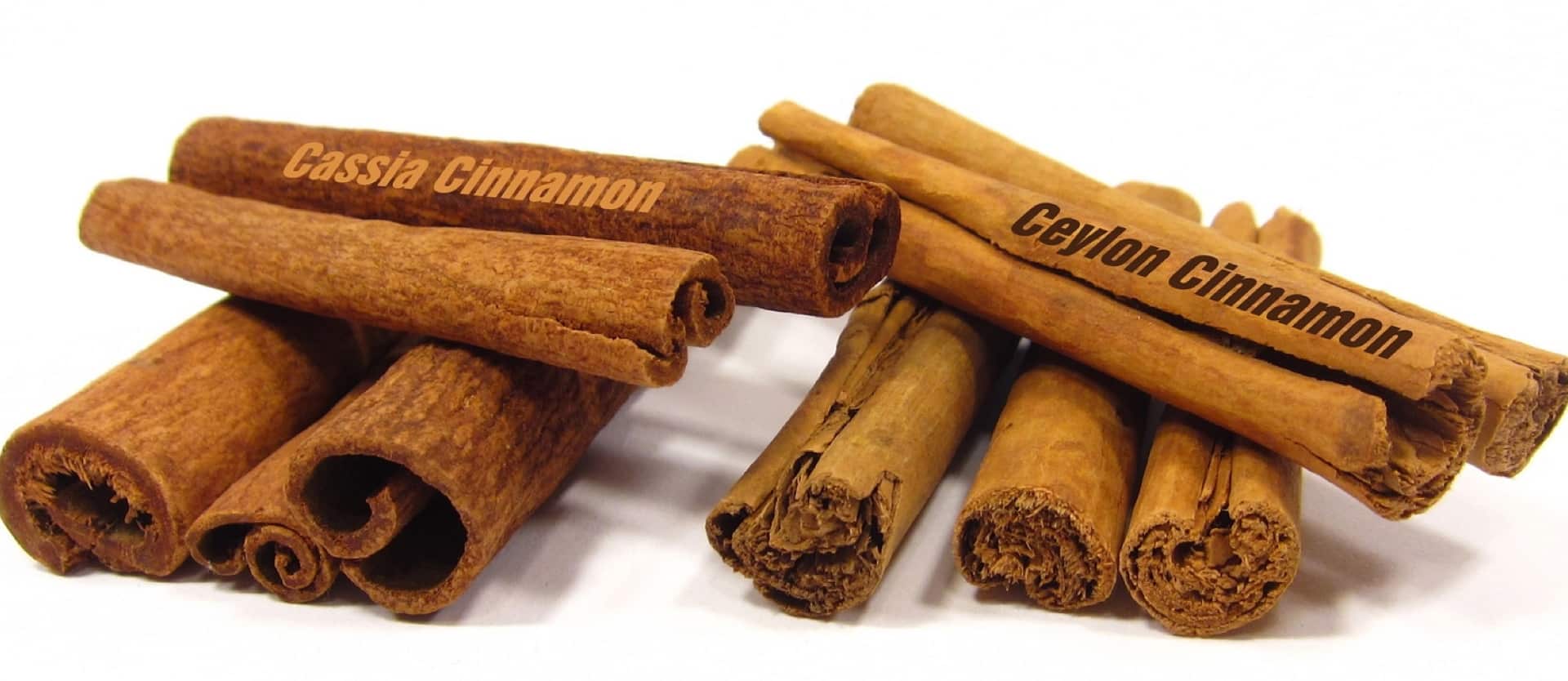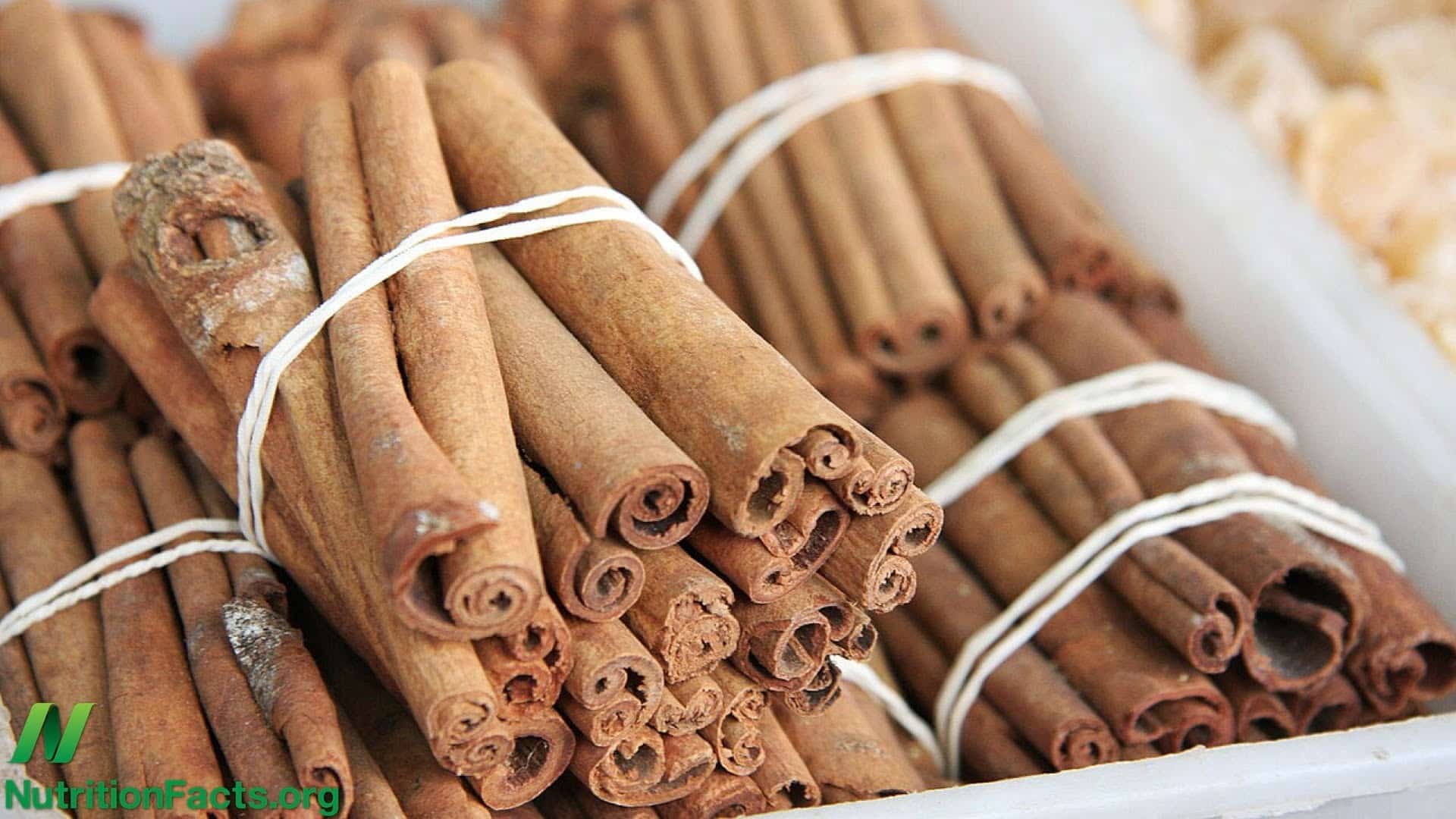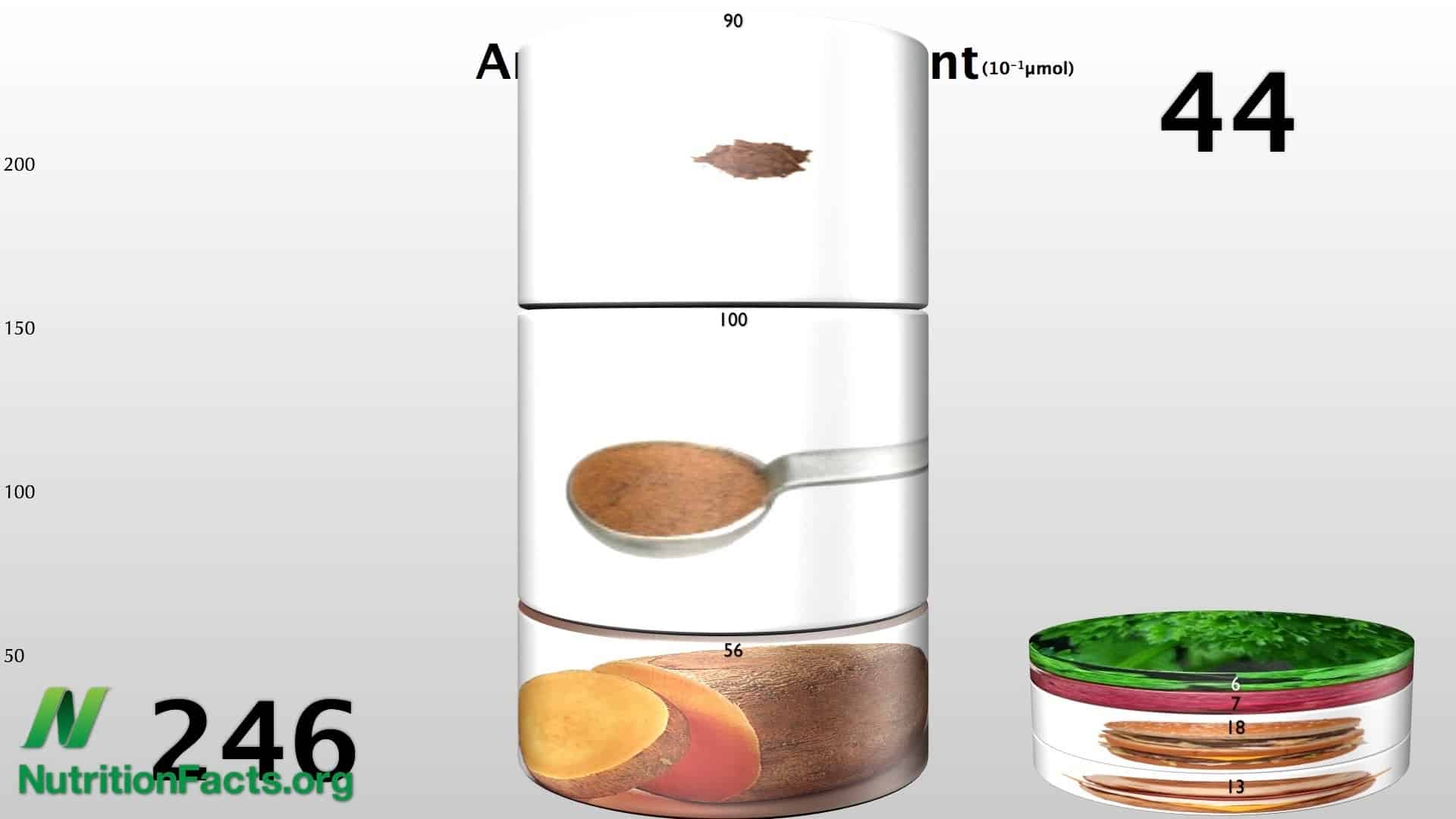
Cinnamon
The food category averaging the most antioxidants is herbs and spices. In terms of antioxidant bang for your buck, açai berries beat out other superstars, such as walnuts, apples, and cranberries, but for best bargain, purple cabbage wins for most antioxidants per dollar, followed by the spice cinnamon.
My Daily Dozen recommends a minimum of a quarter teaspoon of turmeric every day, along with any other (salt-free) herbs and spices you enjoy, and there are many reasons to incorporate cinnamon into your diet. The spice is an antioxidant powerhouse. By adding just a half teaspoon to your morning oatmeal, for example, you could bring the antioxidant power of your meal from 20 units to 120 units.
There are two main types: Ceylon and cassia, also known as Chinese cinnamon. In the United States, anything simply labeled “cinnamon” is probably the less-expensive cassia. Unfortunately, cassia contains coumarin, a compound that may be toxic to the liver at high doses. Unless it’s specifically labeled “Ceylon cinnamon,” a quarter teaspoon even a few times a week may be too much for small children and a daily teaspoon would exceed the tolerable upper safety limit for adults. Does switching to Ceylon give the benefits without the risks?
Nearly all the studies showing blood sugar benefits of cinnamon have been performed with cassia. When researchers used Ceylon instead, the nice blunting of blood sugars seen in response to cassia disappeared. In fact, the toxic coumarin itself may have been the active blood-sugar-lowering ingredient in the cassia cinnamon. Thus, sidestepping the toxin by switching to Ceylon may sidestep the benefit. When it comes to lowering blood sugars, cinnamon may not be safe (cassia), or it may be safe but apparently not effective in reducing blood sugar (Ceylon). I still encourage Ceylon cinnamon consumption, given that it is one of the cheapest common food sources of antioxidants.
For substantiation of any statements of fact from the peer-reviewed medical literature, please see the associated videos below.
Image Credit: GraphicStock. This image has been modified.
Popular Videos for Cinnamon


The Safer Cinnamon
There are four common types of cinnamon: Vietnamese, Chinese (cassia), Indonesian, and Ceylon (true) cinnamon....
Antioxidants in a Pinch
Some herbs and spices—including cinnamon, cloves, lemon balm, marjoram, oregano, and peppermint—are so rich in...All Videos for Cinnamon
-

Natural Ozempic Alternatives: Boosting GLP-1 with Diet and Lifestyle
Certain spices and the quinine in tonic water can boost GLP-1, but at what cost?
-

The Benefits of Gum Chewing for Halitosis (Bad Breath)
Are any gum flavors better than others?
-

Dr. Greger in the Kitchen: Groatnola
Dr. Greger whips up another of his go-to breakfast meals.
-

The Best Diet for Fibromyalgia and Other Chronic Pain Relief
Anti-inflammatory diets can be effective in alleviating chronic pain syndromes.
-

The Benefits of Millet for Diabetes
What were the remarkable results of a crossover study randomizing hundreds of people with diabetes to one and a third cup of millet every day?
-

Spicing Up DNA Protection
The DNA of those cooking with spices such as ginger, rosemary, and turmeric appears less susceptible to breakage.
-

Which Spices Fight Inflammation?
An elegant experiment is described in which the blood of those eating different types of spices—such as cloves, ginger, rosemary, and turmeric—is tested for anti-inflammatory capacity.
-

Fighting the Blues with Greens?
Natural monoamine oxidase enzyme inhibitors in fruits and vegetables may help explain the improvement in mood associated with switching to a plant-based diet.
-

Update on Cinnamon for Blood Sugar Control
Cinnamon can no longer be considered a safe and effective treatment for diabetes.
-

The Safer Cinnamon
There are four common types of cinnamon: Vietnamese, Chinese (cassia), Indonesian, and Ceylon (true) cinnamon. Which is safest in terms of the level of coumarin, which may damage the liver at toxic doses?
-

Antioxidants in a Pinch
Some herbs and spices—including cinnamon, cloves, lemon balm, marjoram, oregano, and peppermint—are so rich in antioxidants that just a small pinch can go a long way.
-

Power Plants
Many of the most powerful drugs in modern medicine’s arsenal came from natural products, from penicillin to the chemotherapy agents Taxol® and vincristine.
